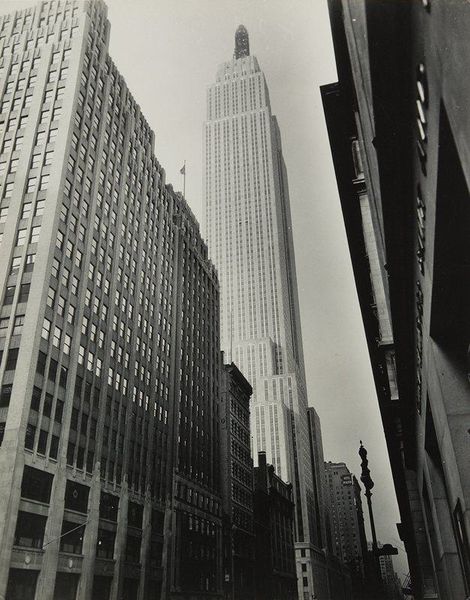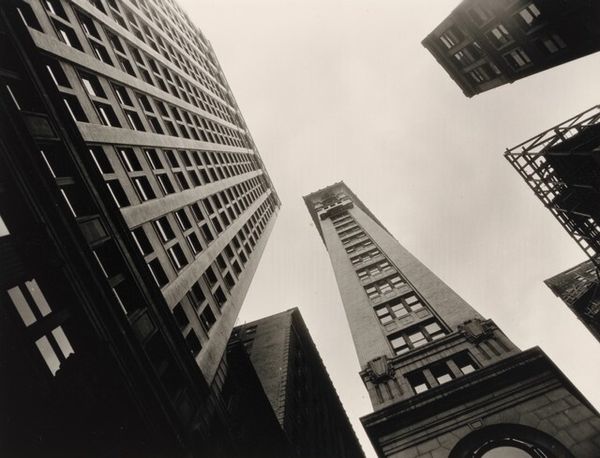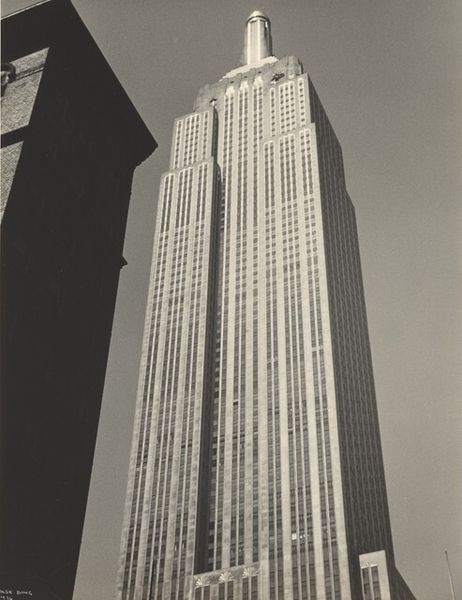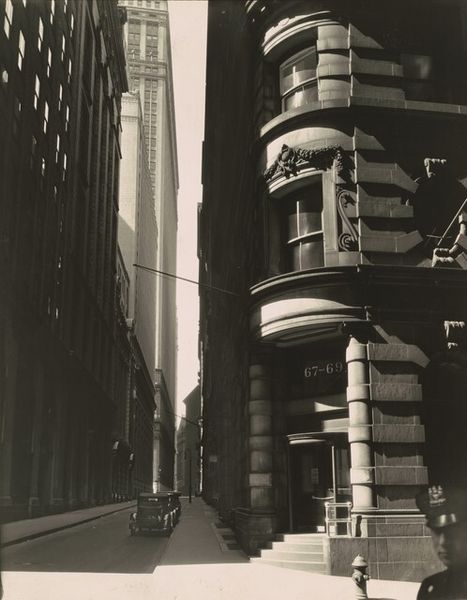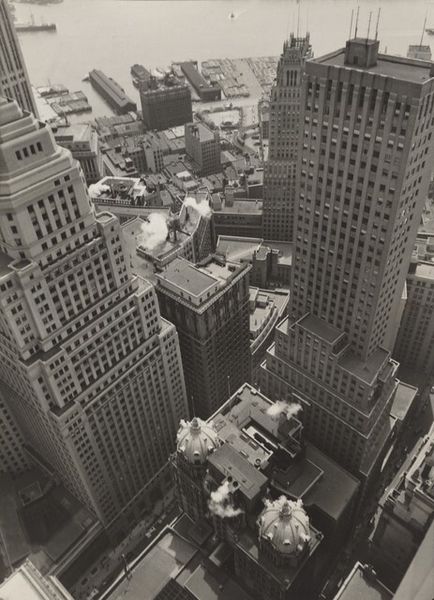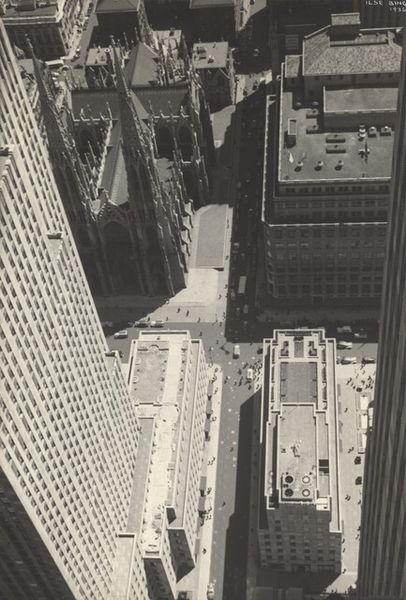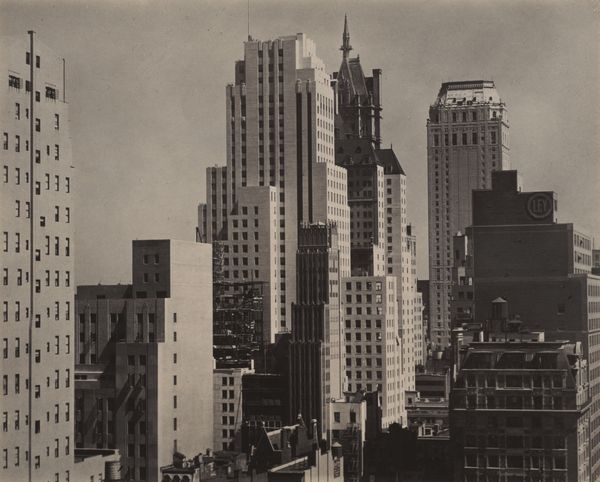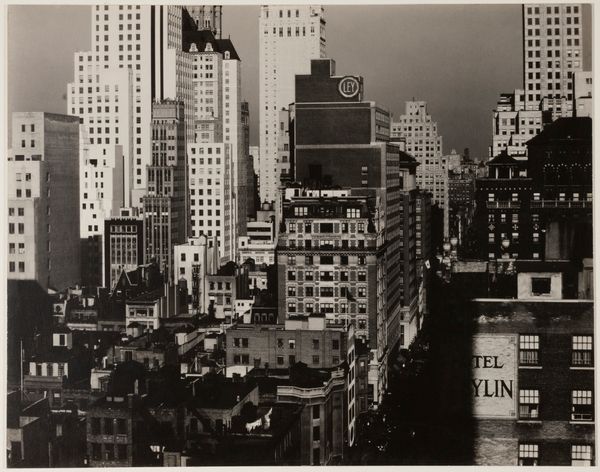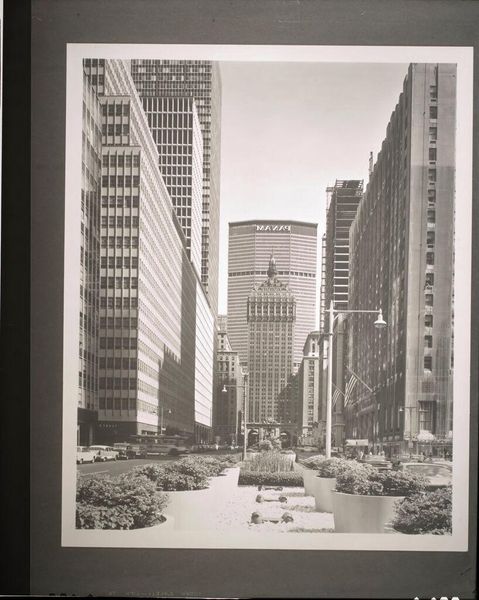
photography, gelatin-silver-print
#
precisionism
#
black and white photography
#
outdoor photograph
#
photography
#
geometric
#
gelatin-silver-print
#
monochrome photography
#
cityscape
Dimensions: sheet (trimmed to image): 23.7 x 19.1 cm (9 5/16 x 7 1/2 in.) mount: 45.1 x 36.2 cm (17 3/4 x 14 1/4 in.)
Copyright: National Gallery of Art: CC0 1.0
Curator: Looking up into the heart of the Financial District, we have Berenice Abbott's "Canyon, Broadway and Exchange Place," taken in 1936. What’s your first visceral response to this? Editor: It's undeniably…oppressive. The towering buildings lean inward, creating this almost claustrophobic funnel. Makes you feel like a tiny ant in the presence of giants. Curator: Absolutely. Abbott captured that sense of dwarfing perfectly. This gelatin-silver print utilizes dramatic perspective, enhancing the monumentality of the architecture. The composition guides the eye upward along the vertiginous lines. Editor: The way the light etches the details is stunning too. The contrast highlights the almost brutalist repetition of the windows on that central skyscraper, broken only by the ornate detail of the building on the right. You feel the city's power, its almost inhuman geometry. Curator: Indeed. It’s a prime example of Precisionism, echoing the sharp, clean lines that define the machine age. The city, in her view, is not just a place, but a geometric force reshaping existence. Abbott was deeply interested in how photography could document social change, specifically New York City. Editor: You can feel that, for sure. There’s an undercurrent of social commentary, maybe. This relentless verticality almost crushes the human spirit—at least, that’s how I interpret it. Makes you wonder if it is progress that Abbott wanted to capture here, or its flipside. Curator: That's insightful. And even though she embraces modernism, there’s a nostalgia embedded, too. In "Changing New York," the larger project this image belongs to, she was trying to document the vanishing architectural heritage, creating a sense of melancholy at times. Editor: I get it, she's not only documenting; she's building her own mood, mixing a sense of awe with subtle criticism through her aesthetic decisions. Curator: It's the blend of fascination and concern, making it a very complex visual experience. Editor: For me, it's a lasting meditation on how we shape—and are shaped by—the spaces we inhabit. Curator: It really brings to question the notion of advancement. Does technological progress mean to live under the long shadows of the powerful?
Comments
No comments
Be the first to comment and join the conversation on the ultimate creative platform.
